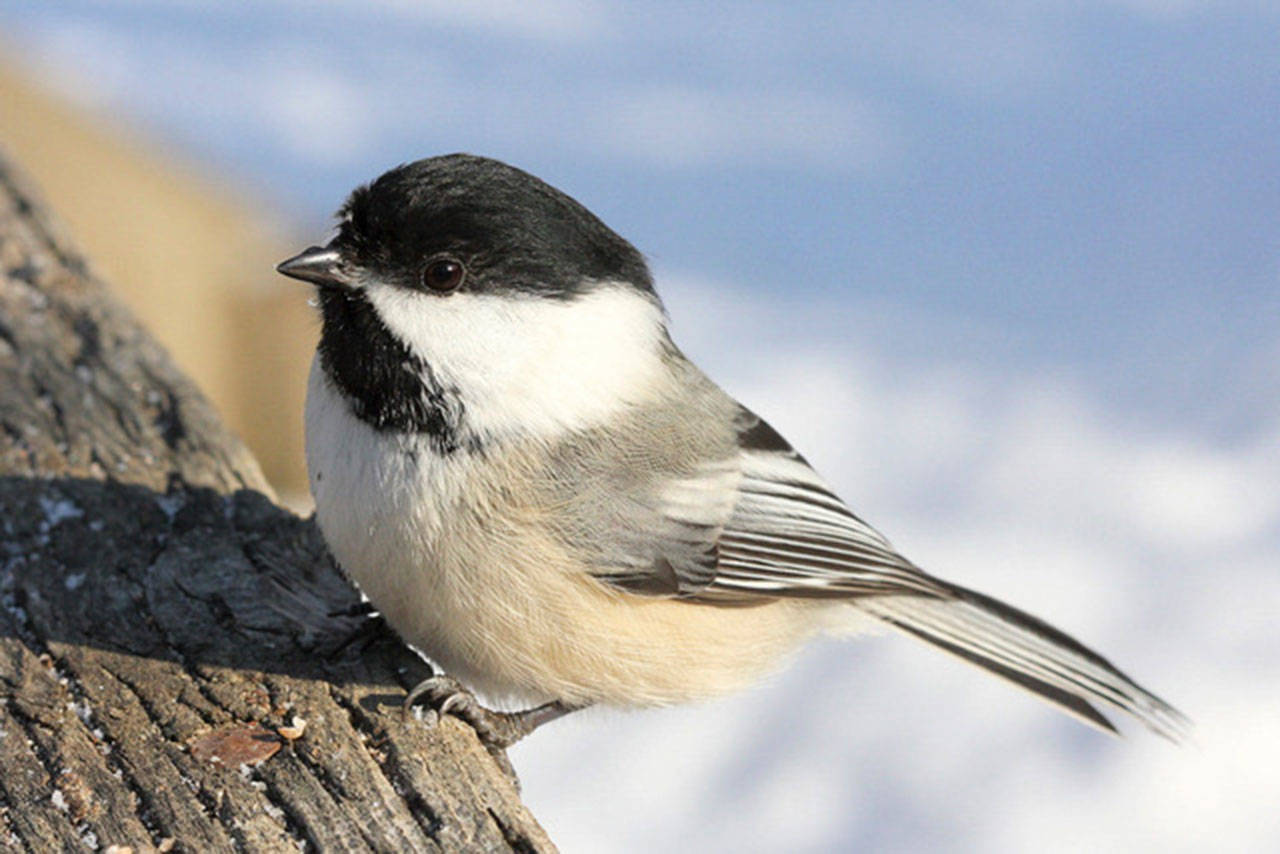Editor’s note: This “Birds Tales” article is the first in a monthly column about our region’s birds. — MD
Chickadees are small, busy birds that most people recognize easily, with a bold black cap and chin, and white facial stripe. They repeatedly fly to feeders, then fly away with a seed in their bill.
What they do with that seed has intrigued researchers for years. Like jays and nutcrackers, chickadees store food in a hidden location (termed a cache, pronounced /kaSH/) for later use.
During fall, chickadees can cache hundreds and even thousands of food items in a day. David Sherry reported in “Animal Behaviour” (1984) that they recall which cache they have already eaten, which caches contain their favorite food items, and which caches they have discovered other animals have eaten. They can retrieve and move their cached food to new locations.
How do they find and remember these cache locations? Research suggests they use visual-spatial cues rather than smell. They remember large global landmarks like the position of trees or locations within the large aviaries where they are studied. Then they locate cues like a set of bird feeders, and finally use details surrounding each cache, like the position of pine needles. This visual-spatial memory is held in a brain structure similar to that used in human memory, the hippocampus.
Bird species that cache food have larger hippocampi than those that do not, and as chickadees enter the critical fall food-storage season, their hippocampi swell with a burst of new nerve growth — old cells dying off and new ones taking their place.
The distinctive call of the chickadee is easy to recognize and remember: “Chick-a-dee-dee.” As spring nears, I’m hearing more of these calls in Sequim … “Healthy adult chickadee seeking relationship.”
Subtle differences in calls and songs identify which flock a chickadee belongs to, and even which individual is singing. Chickadees have up to 16 different kinds of vocalizations — for instance, the warning call of a high-status bird seeing a large predator may be “Chick-a-dee-Dee-DEE.”
The chickadees expand the portion of their brains they use for song in the spring. Later these brain areas shrink, helping the bird remain light in weight for more efficient flying and energy use.
The ability of chickadees to enlarge or shrink areas of their brain in response to cycles of social demand (song) or visual-spatial recall (cache finding) is one of the exciting research areas in the field of neuroethology, an evolutionary and comparative approach to the study of animal behavior and the nervous system.
The same brain area, the hippocampus, is one of the early areas affected by cell loss in Alzheimer’s disease. Discoveries of how birds can grow new brain cells holds exciting promise for medical research.
In Sequim, we have two species of chickadees: the Black-capped Chickadee and the western coastal Chestnut-backed Chickadee. The brown back of the Chestnut-backed Chickadee blends well with our darker forests.
Come to the Dungeness River Audubon Center (2151 W. Hendrickson Road, Sequim) to see the Chestnut-backed Chickadees at the feeders.
Weekly free birdwalks are held there every Wednesday at 8:30 a.m.
Judith White is President of the Olympic Peninsula Audubon Society.



